Understanding the Types of Portable Toilets for Camping
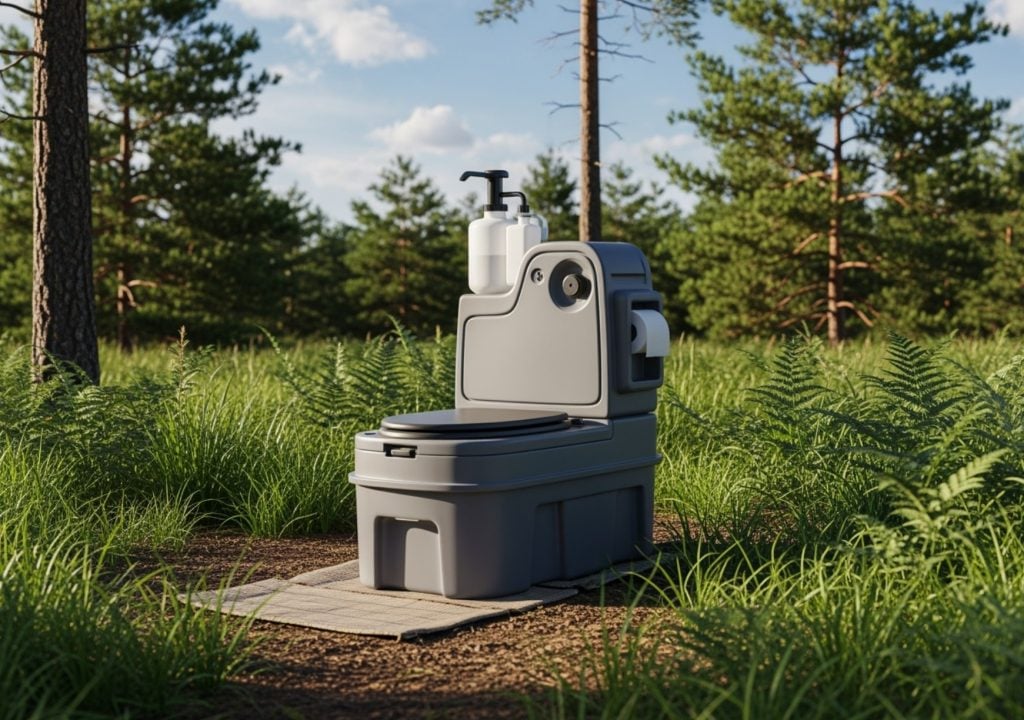
For many of us, camping is about escaping the everyday and reconnecting with nature. But even in the wilderness, basic needs arise. When nature calls, finding a clean, private, and convenient solution can often be a challenge. Traditional methods like digging holes or relying on questionable public facilities can detract from the joy of your outdoor adventure.
This is where portable restrooms for camping become invaluable. They transform a potentially uncomfortable situation into a hygienic and hassle-free experience. The demand for these solutions is rapidly growing as campers seek more comfort and convenience, even when off-grid.
Portable toilets help us maintain personal hygiene and adhere to crucial Leave No Trace principles, protecting our beautiful natural environments. They offer privacy and a level of comfort that can make all the difference, especially for families or longer trips.
In this extensive guide, we will explore everything you need to know about portable restrooms for camping. We’ll dig into the various types available, highlight the key features to look for, and share best practices for their use and maintenance. From basic bucket systems to more Advanced camping restrooms with flushing capabilities, we aim to help you choose the perfect solution for your next outdoor escape.
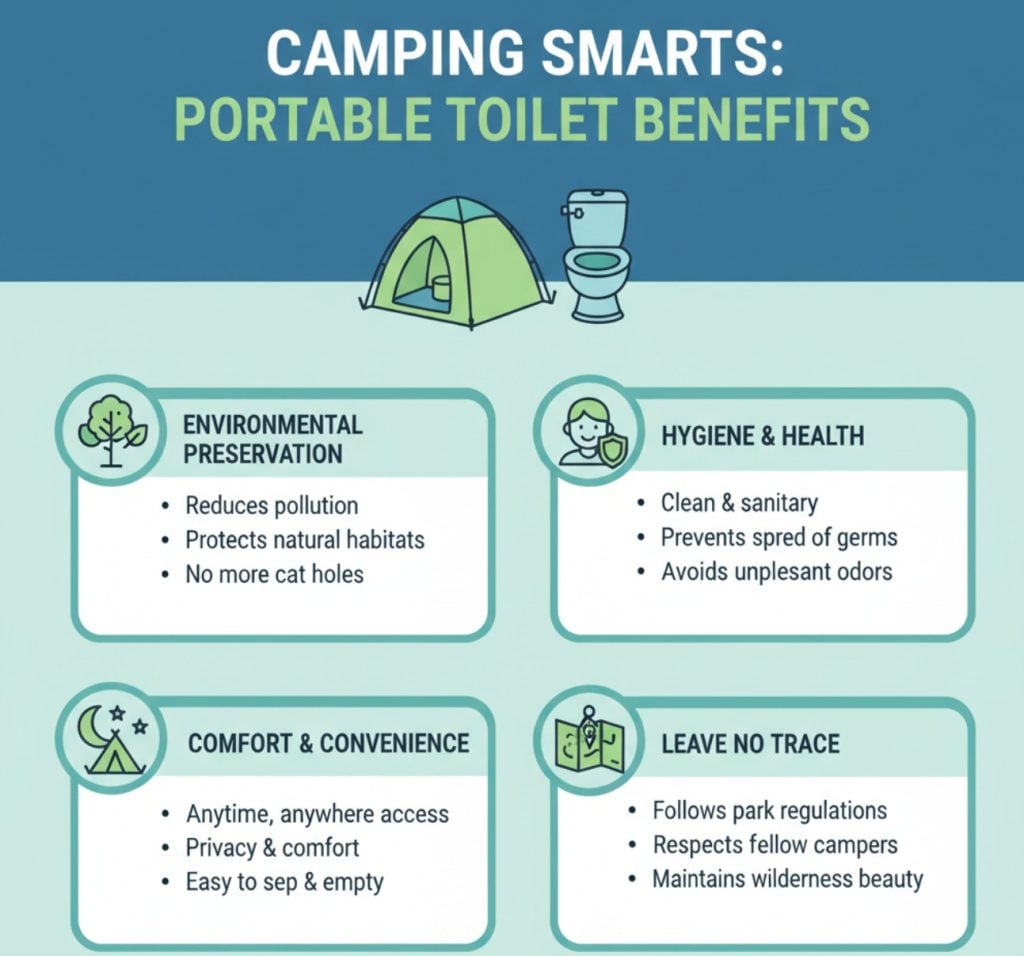
Choosing the right portable restroom for camping depends heavily on the specific needs of the users, the duration of the trip, and the mode of transport. For businesses looking to build a rental fleet, understanding these distinctions is crucial to catering to a diverse customer base, from basic car campers to those starting on extended RV adventures or boating excursions. Each type offers a unique balance of portability, convenience, and waste management.
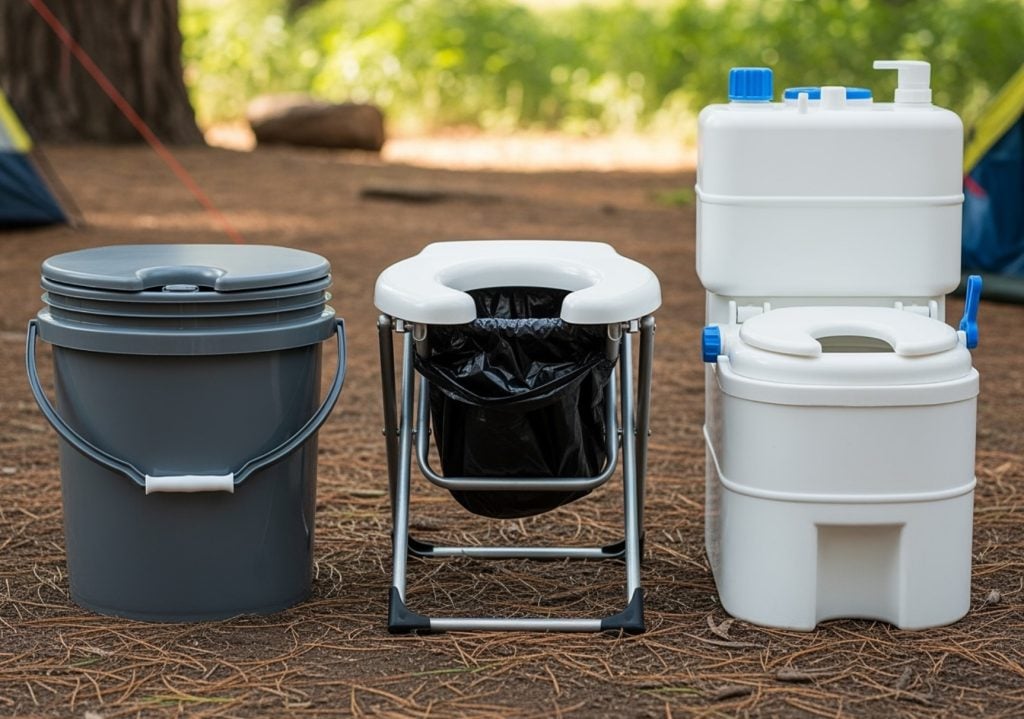
Basic Bag and Bucket Systems
These are the most fundamental and often the most affordable portable toilet options. At their core, they consist of a simple bucket, usually 5-gallon, fitted with a toilet seat and lid. Waste is collected in disposable bags, often lined with absorbent material or gelling agents.
- How they work: Users place a waste bag inside the bucket, do their business, and then seal the bag for disposal. Some systems include a snap-on lid or a separate seat that secures the bag.
- Pros:Low initial cost: Starting from as low as $12.99 for a basic bucket seat, these are highly accessible. The Camco RV Portable Outdoor 5-Gallon Toilet Bucket Kit, for example, is a top-rated option with over 13,849 reviews.
- Simplicity: Easy to set up and use, requiring no water or complex parts.
- Lightweight: The bucket itself is light, though the waste adds weight.
- Versatility: Can be used in almost any setting, from car camping to emergency preparedness.
- Cons:Odor management: While bags help, odor can still be a significant issue, especially in warm weather or with multiple uses.
- Waste handling: Requires frequent bag changes and careful sealing to prevent leaks and smells during transport to a disposal site.
- Lower customer satisfaction: The lack of a flush mechanism and direct contact with waste can make these less appealing for some users. The “not for the faint of heart” sentiment often applies here.
- Stability concerns: Some lighter models might feel less stable than more robust options.
Folding and Collapsible Toilets
Designed for ultimate portability and space-saving, these toilets typically feature a frame that folds down flat or collapses into a compact disc. They also rely on disposable waste bags.
- How they work: The frame is unfolded or extended, a waste bag is secured over the seat, and waste is collected. After use, the bag is sealed and disposed of, and the frame collapses for storage.
- Pros:Extreme portability: Their compact size when collapsed makes them ideal for backpacking, hiking, or situations where space is at a premium. The Cleanwaste Go Anywhere is a prime example.
- Space-saving: They take up minimal storage space in a vehicle or backpack.
- Lightweight: Often made from lightweight plastics or metals, making them easy to carry.
- Adjustable height: Some models, like the ALEVMOOM XXL Portable Toilet, offer adjustable height, catering to different users and comfort levels.
- Cons:Reliance on disposable bags: Requires a constant supply of specialized waste bags, which adds to ongoing costs and environmental considerations.
- Stability concerns: Some folding models may not feel as sturdy as rigid options.
- Limited capacity: Each bag holds a limited amount, necessitating frequent changes, especially for groups.
- Hygiene: While bags contain waste, the open design can still lead to splashes or odor if not managed carefully.
Flushable Two-Tank Toilets
These are often considered the most “home-like” portable toilet experience. They consist of two separate tanks: an upper freshwater tank for flushing and a lower waste holding tank.
- How they work: A pump (piston or bellows) is used to draw water from the freshwater tank to rinse the bowl. A sliding valve separates the bowl from the sealed waste tank below, preventing odors. A waste level indicator often signals when it’s time to empty.
- Pros:Home-like comfort: Provides a familiar toilet experience with a flush, making it much more appealing for many campers, especially families. Models like the VEVOR Portable Toilet and Thetford Porta Potti 365 are popular for this reason.
- Superior odor control: The sealed waste tank and flush mechanism significantly reduce odors, making them suitable for use inside tents, RVs, or cabins.
- High perceived value: Renters appreciate the added comfort and hygiene.
- Extended use: Larger waste tanks (e.g., 5.3-gallon or 5.5-gallon) mean less frequent emptying compared to bucket systems.
- Suitable for various vehicles: Excellent for RVs, boats, and car camping where space allows.
- Cons:Heavier: These units are heavier than bag or folding systems, especially when the waste tank is full (a 5.5-gallon tank can weigh around 45 pounds).
- Requires more cleaning between rentals: Both tanks need to be emptied, rinsed, and sanitized thoroughly.
- Higher purchase price: These advanced models typically cost more, ranging from $60 to over $150.
- Water usage: While efficient, they still require a freshwater supply for flushing.
Key Features of Advanced Camping Restrooms
When equipping a rental fleet with portable restrooms, focusing on certain key features is paramount. Durability, capacity, and ease of maintenance directly impact profitability, customer satisfaction, and the longevity of your investment. Understanding these elements will help you select units that meet the rigorous demands of outdoor use and frequent rental cycles.
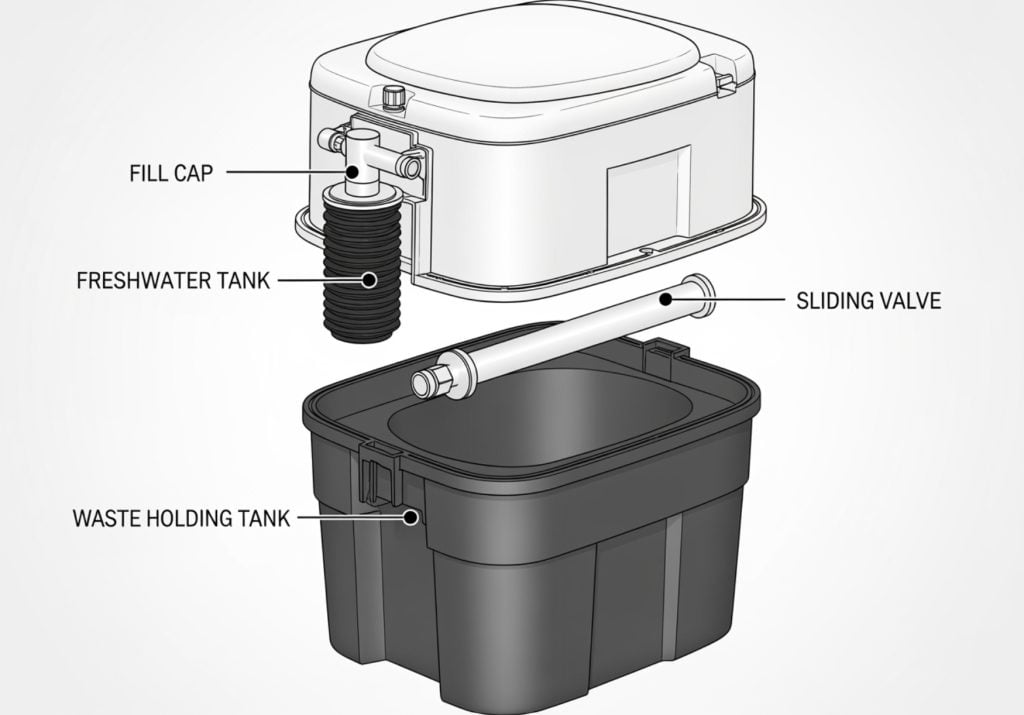
Capacity, Size, and Weight
These factors are critical for both user experience and logistical management. The right balance ensures comfort without compromising portability or ease of handling.
- Waste Tank Capacity: The standard for many portable flush toilets is around 5 gallons, though capacities can range from 2.6 gallons (e.g., Thetford Porta Potti 135/335) to 5.5 gallons (e.g., Thetford Porta Potti 365). A 5-gallon capacity is often considered a good balance, providing enough uses for a family over a weekend trip without becoming excessively heavy when full. For solo campers or shorter trips, a smaller capacity might suffice, while groups or longer excursions might benefit from larger tanks.
- User-to-Capacity Ratio: Consider how many people will be using the toilet and for how long. A 5.5-gallon tank can offer up to 56 flushes, which is generally adequate for a family of four for a long weekend. Educating renters on this ratio helps manage expectations and ensures they choose an appropriate unit.
- Dimensions for Vehicle Transport: Compact dimensions are vital for car camping, RVs, vans, and boats where space is limited. Models like the Thetford Porta Potti 365 (16.3″ H x 15″ W x 16.8″ D) are designed to fit comfortably in various vehicle types. For rental businesses, units that stack or store efficiently are a logistical advantage.
- Weight When Full vs. Empty: While an empty portable toilet might weigh around 10-15 lbs, a 5.5-gallon waste tank filled with liquid can easily weigh 45 lbs or more. This weight needs to be manageable for emptying, especially for individual renters.
- Choosing the Right Size for Families vs. Solo Campers:Solo Campers/Short Trips: Smaller, lighter options like folding toilets or 2.6-gallon flush models are often preferred for their portability.
- Families/Groups/Longer Trips: Larger capacity flushable toilets offer greater convenience and comfort, reducing the frequency of emptying. The VEVOR Portable Toilet with its 5.3-gallon waste tank is a strong contender here.
Durability and Construction for Rental Use
For a rental fleet, durability is paramount. Units must withstand repeated use, transport, and cleaning cycles.
- High-Density Polyethylene (HDPE): Most quality portable toilets are constructed from HDPE, a robust and impact-resistant plastic that can endure harsh outdoor conditions and frequent handling. This material is also relatively easy to clean.
- Robust, Leak-Proof Seals: This is perhaps the most critical feature. A high-quality portable toilet must have reliable seals between the upper and lower tanks, and around the waste valve, to prevent leaks and contain odors. Thetford Porta Pottis are renowned for their effective sealing systems.
- High Weight Capacity: Units should be designed to safely support a wide range of users. Many portable toilets offer weight capacities of 250-350 lbs, with some heavy-duty folding models like the ALEVMOOM XXL Portable Toilet boasting capacities up to 880 lbs.
- Smooth Surfaces for Easy Cleaning: Interior and exterior surfaces should be smooth and non-porous to facilitate thorough cleaning and prevent the buildup of grime and odors. This is essential for maintaining hygiene standards between rentals.
Functionality and Ease of Maintenance
Efficient functionality and straightforward maintenance are key to both user satisfaction and operational efficiency for a rental business.
- Piston vs. Bellows Pump Flush:Piston Pump: Generally provides a more powerful, consistent flush, similar to a home toilet. It’s often found in higher-end models like the Thetford Porta Potti 365.
- Bellows Pump: A simpler, more manual pump mechanism. While effective, it might require more effort per flush.
- Some advanced models, like the Flush-N-Go 4822e, even feature battery-powered electric flushing for ultimate convenience.
- Waste Level Indicators: An easy-to-read indicator prevents overfilling and helps users know exactly when the waste tank needs to be emptied, avoiding unpleasant surprises.
- Detachable Holding Tanks: This feature simplifies the emptying process, allowing users to easily separate the waste tank and transport it to a disposal point without moving the entire unit.
- Rotating Pour-Out Spouts: A well-designed, rotating pour-out spout (like those on Thetford models) minimizes splashing and ensures a cleaner, more hygienic emptying experience.
- Price Points from Basic to Premium: The market offers a wide range. Basic bucket systems are budget-friendly, while flushable models can range from around $60 (e.g., VEVOR Portable Toilet) to over $140 for premium units. Offering a variety allows you to cater to different customer budgets and needs.
Best Practices for Management and Maintenance
For any business providing portable restrooms for camping, proper management and meticulous maintenance are critical. Not only do these practices ensure customer satisfaction, but they also uphold environmental responsibility and extend the lifespan of your rental fleet. Educating renters on correct usage and disposal is as important as the quality of the units themselves.
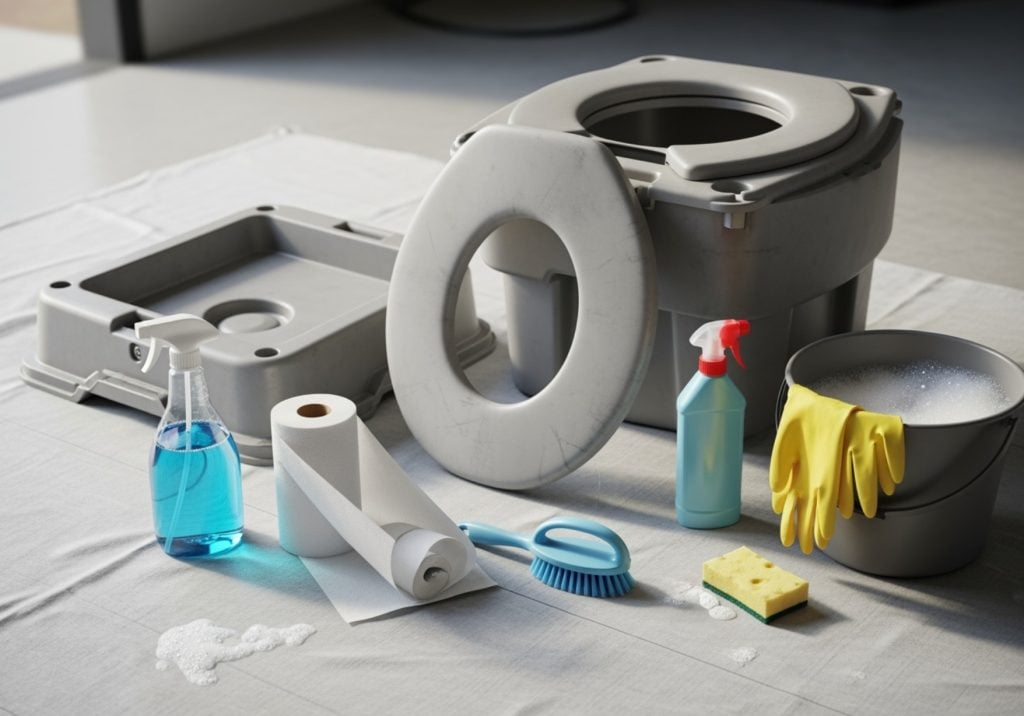
Safe Waste Disposal and Environmental Responsibility
Adhering to Leave No Trace principles is paramount when dealing with human waste in the outdoors. Proper disposal protects ecosystems and public health.
- Leave No Trace Guidelines: Emphasize to renters that all human waste must be packed out or disposed of in designated facilities. This means no burying of waste bags or dumping liquid waste in undesignated areas.
- Approved Dump Stations: Waste from portable toilets (especially flushable models) must be emptied into designated RV dump stations or a home sewage system. Many campgrounds, rest stops, and RV parks offer these facilities. For bucket and bag systems, sealed bags should be disposed of in regular trash receptacles, ensuring they are securely tied and double-bagged to prevent leaks and odors.
- Using Waste Gelling Agents: For bag-based systems and even for flushable tanks, waste gelling agents or powders can significantly improve odor control and solidify liquid waste, making it easier and safer to transport. Products like “Poo Gel” are designed for this purpose.
- Regulations for Public Lands: Inform renters about specific regulations regarding human waste disposal on public lands, national parks, and wilderness areas, as these can vary. Some areas may require all human waste to be packed out, even solid waste, in approved bags.
- Customer Education: Provide clear, concise instructions on waste disposal with every rental. This could include laminated cards, QR codes linking to online guides, or brief verbal instructions at pickup. Reinforce the importance of environmental protection.
Cleaning and Sanitation Protocols for Your Fleet
Maintaining a clean and hygienic fleet is non-negotiable for a rental business. Thorough cleaning after each rental prevents the spread of germs, eliminates odors, and preserves the equipment.
- Step-by-Step Cleaning Process:Emptying: Ensure the waste tank is completely emptied at an approved dump station.
- Rinsing: Rinse the waste tank thoroughly with water multiple times until the water runs clear.
- Disassembly: For flushable models, separate the upper and lower tanks. For all models, remove any removable seats or covers.
- Washing: Use a non-abrasive cleaner (like Thetford’s Aqua-Clean) and a soft brush or sponge to scrub all interior and exterior surfaces, including the bowl, seat, lid, and both tanks. Avoid stiff brushes or harsh chemicals that can damage seals or plastic.
- Sanitizing: Apply a disinfectant solution to all surfaces, letting it sit for the recommended contact time before rinsing.
- Drying: Allow all components to air dry completely to prevent mold and mildew.
- Reassembly: Reassemble the toilet, ensuring all seals are correctly seated.
- Recommended Non-Abrasive Cleaners: Stick to cleaners specifically designed for portable toilets or mild, non-abrasive household cleaners. Thetford recommends its own Aqua-Clean for its Porta Potti models.
- Seal Lubrication and Maintenance: Regularly inspect and lubricate the rubber seals, especially the one between the bowl and the waste tank, using manufacturer-recommended toilet seal lubricants. This prevents leaks, ensures smooth operation of the valve, and maintains odor control. Avoid petroleum-based products as they can degrade rubber seals.
- Odor Control Chemicals and Pods: Before each rental, add appropriate odor control chemicals or dissolvable pods (e.g., Camco TST MAX Camper/RV Toilet Treatment Drop-INs) to the waste tank. These chemicals break down waste, control odors, and often contain lubricants for the seals.
Essential Accessories to Offer Renters
Providing a comprehensive package of accessories not only improves the renter’s experience but can also be an additional revenue stream for your business.
- Privacy Tents: A pop-up privacy tent is crucial for discretion, especially for car campers or those without an RV bathroom. The Pop Up Pod Privacy Shower Tent is a best-seller and highly rated.
- Biodegradable Toilet Paper: Standard toilet paper can clog portable toilet systems. Offer or recommend biodegradable, quick-dissolving RV/marine toilet paper.
- Deodorizer Packets/Liquids: Provide a starter pack of high-quality deodorizer chemicals or pods.
- Waste Bags: For bucket or folding systems, supply a sufficient quantity of durable, leak-proof waste bags, preferably with gelling agents included.
- Hand Sanitizer: Essential for hygiene after using any portable restroom, especially if hand-washing facilities aren’t available.
- Gloves: Disposable gloves can be a thoughtful addition for emptying the waste tank.
- Cleaning Wipes: Provide heavy-duty cleaning wipes for quick cleanups.
Sourcing and Distributing Advanced Camping Restrooms
Meeting the rising demand for comfortable and convenient camping amenities requires a strategic approach to sourcing and managing your rental inventory. As the camping market continues to grow, offering reliable, high-quality portable restrooms can set your business apart.

Evaluating Suppliers for Quality and Reliability
The foundation of a successful rental fleet lies in the quality of the equipment. Partnering with reputable suppliers is crucial.
- Manufacturer Reputation: Research manufacturers known for producing durable and reliable portable sanitation products. Look for companies with a long history in the industry and positive reviews from other businesses or end-users. Brands like Thetford, Dometic, and Camco are well-established in the market.
- Material Specifications: Request detailed material specifications. As discussed, high-density polyethylene (HDPE) is preferred for its durability. Ensure components like seals, pumps, and hinges are made from robust, long-lasting materials designed for frequent use and cleaning.
- Availability of Spare Parts: Wear and tear are inevitable. A good supplier will offer readily available spare parts (e.g., replacement seals, pump mechanisms, caps) to ensure quick repairs and minimize downtime for your rental units. This is a critical factor for long-term cost-effectiveness.
- Warranty and Support: Understand the warranty offered on the products. A strong warranty indicates the manufacturer’s confidence in their product. Evaluate the level of customer support provided, as you may need assistance with technical issues or bulk order logistics.
Logistics for a Modern Rental Fleet
Efficient logistics ensure that your advanced camping restrooms are available when and where your customers need them, while also optimizing your operational costs.
- Stocking for Diverse Needs (Events, RVs, Boats): Your inventory should reflect the varied needs of your target market. Stock a mix of basic bucket systems, folding toilets, and various sizes of flushable two-tank models. Consider specialized units if you cater to specific niches like marine or large outdoor events.
- Bulk Purchasing and Shipping: Leverage bulk purchasing to secure better pricing from suppliers. Plan your inventory levels based on seasonal demand to avoid overstocking or running out during peak times. Coordinate shipping to minimize costs and ensure timely delivery.
- Storage Solutions for Inventory: Portable toilets, even when compact, require dedicated storage space. Ensure your storage area is clean, dry, and organized to protect the units from damage and facilitate easy access for preparation and dispatch. Consider shelving or stacking solutions to maximize space.
Meeting the Demand for Advanced Camping Restrooms
The market for camping has evolved, with many outdoor enthusiasts now seeking a higher level of comfort and convenience. Your rental business can capitalize on this trend by strategically meeting this demand.
- Market Shift Toward Comfort: Campers, particularly families and those new to outdoor recreation, are increasingly prioritizing comfort and hygiene. Offering advanced, flushable portable toilets directly addresses this desire, providing a more pleasant experience than traditional pit toilets or primitive methods.
- Catering to Families and Groups: Families with young children, older adults, or individuals with specific health needs often find traditional camping sanitation challenging. High-quality portable restrooms offer a dignified and convenient solution, making camping accessible and enjoyable for a broader demographic.
- The Value of Offering Premium Units: While basic options have their place, investing in and promoting premium units can attract a clientele willing to pay more for superior comfort, odor control, and ease of use. Highlight features like powerful flushing, large capacities, and integrated waste level indicators to showcase the value. This approach positions your business as a provider of superior sanitation solutions, enhancing your reputation and customer loyalty.
Frequently Asked Questions about Portable Restrooms for Camping
We often receive questions from campers and rental partners about the practicalities of portable restrooms. Here are answers to some of the most common inquiries to help you and your customers make the most of these essential camping companions.
How many uses can a standard 5-gallon portable toilet handle before needing to be emptied?
A typical 5-gallon waste tank can handle approximately 30-50 uses before needing to be emptied. This estimate can vary based on the specific model, the amount of liquid used for flushing, and whether both liquid and solid waste are being collected. For a family of four, this usually translates to a comfortable weekend trip, or a longer trip for one or two people. It’s always a good practice to monitor the waste level indicator (if available) and plan for emptying before it reaches full capacity, as a full tank can be heavy and more challenging to manage.
What are the most important hygiene tips to provide to renters?
To ensure a hygienic and pleasant experience for all, we advise renters on several key hygiene practices:
- Use Hand Sanitizer: Always use an alcohol-based hand sanitizer immediately after using the toilet, especially if hand-washing facilities are not readily available.
- Keep the Lid Closed: Emphasize keeping the toilet lid closed when not in use to contain odors and prevent anything from falling into the bowl.
- Use Deodorizing Chemicals: Ensure they add the provided deodorizing chemicals or pods to the waste tank after initial setup and after each emptying. These chemicals break down waste and neutralize odors.
- Proper Toilet Paper: Instruct them to use only quick-dissolving, biodegradable RV/marine toilet paper to prevent clogs.
- Clean Before Returning: Encourage renters to perform a basic clean and rinse of the unit at an approved dump station before returning it, making the turnaround process smoother and more sanitary for your fleet.
Are there specific regulations for disposing of waste from these toilets?
Yes, absolutely. Proper waste disposal is crucial for environmental protection and public health. Renters must be made aware of these regulations:
- Designated RV Dump Stations: Waste from flushable portable toilets must be disposed of at designated RV dump stations. These facilities are specifically designed to handle and treat human waste and are commonly found at campgrounds, RV parks, and some rest areas.
- Home Sewage Systems: Waste can also be disposed of into a home sewage system.
- Campground Toilets: In some cases, liquid waste may be emptied into public campground toilets, but this should be done discreetly and only if explicitly permitted by campground rules. Solid waste bags from bucket systems should be securely sealed and placed in general trash receptacles.
- Illegal and Harmful Practices: It is illegal and harmful to dispose of waste in the wilderness (e.g., digging a hole and dumping), in vault toilets (which are not designed for liquid waste from portable units), or into storm drains. These practices can contaminate water sources, harm wildlife, and spread disease. Always remind renters to “Leave No Trace” and dispose of waste responsibly.
Conclusion: Elevating the Outdoor Experience
The evolution of portable restrooms has truly transformed the camping experience, moving it beyond basic necessities to a field of improved comfort and convenience. We’ve explored the diverse types available, from the simplicity of bucket systems to the home-like amenities of flushable two-tank models, each offering unique advantages for different camping styles. Understanding key features like tank capacity, durable construction, and efficient flush mechanisms is vital for both campers seeking personal solutions and businesses building robust rental fleets.
By adhering to best practices in waste disposal and rigorous cleaning protocols, we not only ensure a pleasant experience for users but also uphold our collective responsibility to protect our precious natural environments. The availability of useful accessories further refines the outdoor sanitation solution, making it as seamless as possible.
The growing market for portable restrooms for camping underscores a clear trend: outdoor enthusiasts are increasingly unwilling to compromise on basic comforts, even in remote settings. Providing high-quality, well-maintained, and user-friendly portable toilets is no longer just a convenience; it’s a value proposition that lifts the entire outdoor experience. As providers, our commitment to quality and cleanliness ensures that every adventure can be as fresh and enjoyable as possible, leaving nothing but footprints behind.
